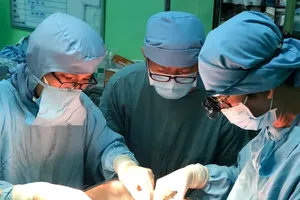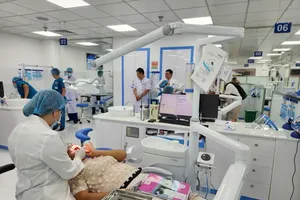 |
A representative of the SEP group introduced carbon neutralisation technology that will be applied at Tam Lap 2 industrial cluster in Binh Duong Province's Phu Giao District. (Photo: baodautu.vn) |
Within the framework of the signing ceremony, a representative of the SEP group introduced carbon neutralisation technology that will be applied at Tam Lap 2 industrial cluster in Phu Giao district. Accordingly, solar energy will be used, waste and wastewater treatment systems built and industrial waste recycled in the cluster.
Construction of the 180-ha project is expected to begin at the end of this year with an investment capital of about US$200 million.
Tam Lap 2 will be developed based on the carbon-neutral model piloted at Banwol-Sihwa Industrial Complex in the RoK. Once completed, it will welcome about 20 member companies of SEP to invest here.
Binh Duong province is calling for foreign investment in environment-friendly projects. In February this year, Becamex IDC Corporation and Singapore-based Sembcorp Development Ltd signed an agreement under which both sides will develop five green- and smart-oriented industrial parks in Vietnam in the next three years, some of which will be located in Binh Duong.
Currently, the third Vietnam-Singapore Industrial Park (VSIP III) in Binh Duong is being built in line with the criteria of a green industrial park.
Denmark-based LEGO group has decided to build its first carbon-neutral factory in VSIP III with an investment capital of US$1.3 billion. The plant is expected to become operational by 2024, creating 4,000 jobs for local people within the next 15 years.





)


















